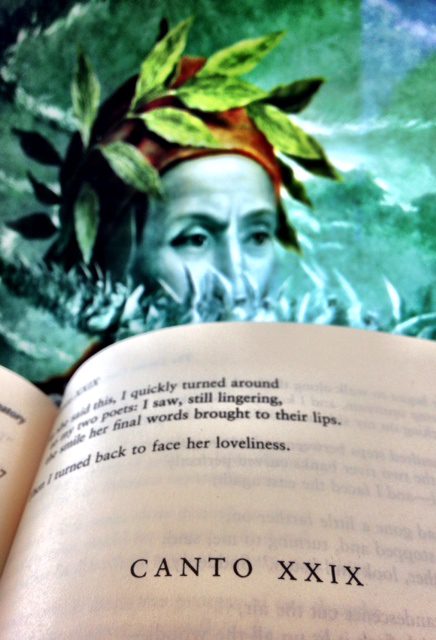Purgatorio, Canto XXIX
I promised you that things would get strange on this mountain. Canto XXIX is what I was talking about. It’s a highly symbolic vision of salvation history.
It begins with Dante strolling along the banks of the Lethe, walking parallel with Matelda on the other side. He is ecstatic, marveling in the hyperreal beauty of Eden. This is nature as theophany — that is, as a revelation of God. Then, walking toward some trees, he adjusts his vision and sees that they are actually giant gold candlesticks.
“Look, brother, and listen,” says Matelda. The forest gives up its secrets
Beyond the candlesticks, Dante sees the beginning of a Heavenly Pageant, reminiscent of a wedding procession. What follows is a parade that reveals the history of salvation, culminating in the Church Triumphant (i.e., the Church in heaven, as distinct from the Church Militant — the Church in the world — and the Church Penitent, which is the Church in Purgatory. See here for an explanation.)
I’m not going to explain, symbol by symbol, everything in this extremely rich vision of a pageant. The University of Texas’s Danteworlds project gives it to you in brief:
Looking across the river in the Terrestrial Paradise, Dante witnesses a spectacular pageant of religious imagery, much of it based on Ezekiel and the Apocalypse (Revelation) in the Bible. He first sees seven tall, golden candles leaving behind a rainbow trail of colors (29.43-54, 73-8). Representing the sevenfold spirit of God or the seven gifts of the Holy Spirit (wisdom, understanding, counsel, might, knowledge, piety, fear of the Lord), these candles lead the procession of biblical figures and symbols: twenty-four mature men (64-6, 82-4), two by two, dressed in pure white and wearing crowns of lilies (books of the Hebrew Bible); four animals (92-6), each with six wings (full of eyes) and wearing a leafy-green crown (the Gospels); a two-wheeled chariot pulled by a Griffin (106-20); three dancing women–colored fire-red, emerald-green, and snow-white–at the right wheel of the chariot, and four dancing women (one with three eyes), in crimson-colored garments, at the left wheel (theological and cardinal virtues) (121-32); seven more men dressed in white but wearing crowns of roses and other red flowers (133-50), including two old men, one with the bearing of a physician (Luke: Acts of the Apostles) and the other carrying a sword (Paul: Epistles), four men of humble appearance (James, Peter, John, Jude: short epistles), and a single old man with sharp features even as he sleeps (John: Apocalypse).
The glorious chariot of a triumphant conqueror, unmatched by any on earth, is pulled by a Griffin: a dual natured creature, half-lion and half-eagle. The Griffin symbolizes Christ; the chariot is the Church.
Dante stands stock still, taking it all in. Then:
And when the chariot was opposite me,
thunder was heard! The exalted creatures, then,
as though forbidden to move on, stopped short,
as did the flaming ensigns at the front.
The triumphal holy chariot, lashed to a griffin whose wings extend into the sky, out of sight, now rests in front of the pilgrim. Why? Tomorrow, we shall see.


Subscribe for as little as $5/mo to start commenting on Rod’s blog.